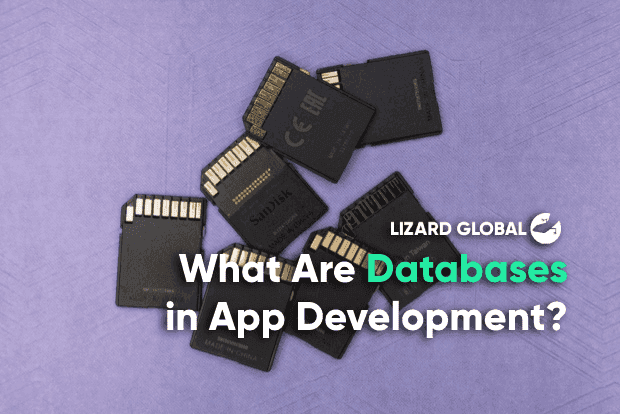app development
software
+ 5 more ...
Understanding Mobile App Development
29 May 2020
by Lotte, Digital Content Specialist
29 May 2020
by Lotte, Digital Content Specialist
app development
software
programming
code
native
progressive web app
cross-platform
Understanding Mobile App Development
Table of contents
Contact us
We will get back to you in the next 48 hours.

There’s much more to app development than some lines of code. This blog gives you an insight into three types of app development: Native, Web, Progressive, and Cross-platform.
While the world around us is changing rapidly, our mobile devices are changing just as quickly. Technology - especially mobile applications are continuously being improved - taking advantage of new advances and improvements and providing a better overall user experience. In order to keep up, it’s critical to stay up-to-date with the latest innovations in software development. This blog provides you with an insight into the basics of application development.
Understanding development
Application development is a very broad concept, and difficult to grasp for people who aren’t familiar with technical terms and concepts. In order to give you a clear insight into what application development entails, we start with an overview of four different types of application development: Native, Web, Progressive, and Cross-Platform.
Native mobile application development
Native application development is bound to specific operating systems/platforms, and are only available in mobile app stores. This means that native apps aren’t made to function on browsers. These fully mobile-bound applications mainly focus on three operating systems: Apple iOS, Android, and to a much lesser extent Windows (Phone). Platforms like Apple and Google provide app developers with their own Integrated Development Environments (IDEs); Xcode and Android Studio. These IDEs come with a user friendly interface to provide an overall better programming experience for developers. Apple’s iOS, Android, and Windows platforms possess their own designated programming languages:
- iOS/Apple: Objective-C, Swift
- Android: Java, Kotlin
- Windows: C#
These platform-specific programming languages are developed to provide the best possible user experience for that specific operating system. iOS apps made with Objective-C or Swift all own a consistent user experience and functionality of key features, fitting the iOS platform. Think of, for example, social media sharing: The way iOS handles the sharing of a photo on various platforms works the same amongst different native iOS apps that use the same libraries. Native app development provides overall better performance, as there is a direct interaction with native APIs. This is very useful for apps that rely on heavy-performance, like games with high-quality graphics. Next to that, native developed apps have immediate access to new features introduced by its operating system. Additionally, while not unique, native developed apps also have the ability to interact with built-in features, like your camera or microphone, and other native apps.
The downside of native apps is the fact that they are solely developed for a specific operating system. This means that an application made for iOS can’t be used on an Android device. Apps like Instagram or Snapchat are available on basically all platforms, but they’re all built separately with separate codebases.
Examples of Native Apps are:
- Snapchat
- Pokémon GO
- Google Maps
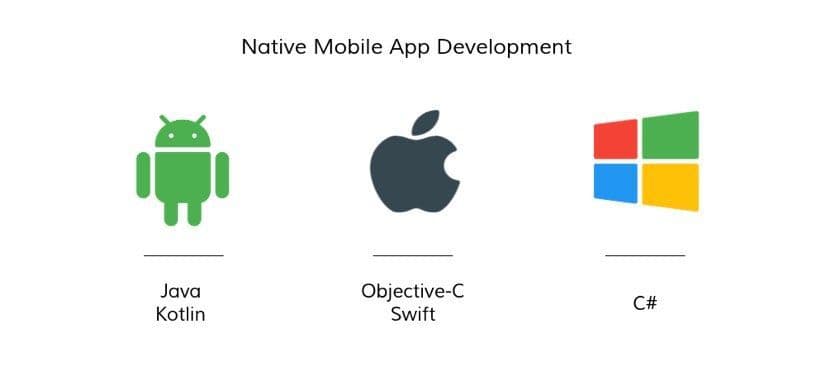
Web application development
Web applications are defined as apps that are accessed by web browsers via a network like the Internet. A web application is different from a normal website, as web apps are generally more focused on additional functionalities and user interactivity, and almost always require a login to access all or certain functions of the app. Other than mobile apps, web apps don’t have to be downloaded or installed through an app store, but are immediately accessible in browsers like Chrome, Safari, or Firefox by visiting the applicable site. In order to be accessible on multiple devices and screens, web applications are highly dependent on responsive design, which makes sure that the interface stays consistent, no matter what device you use.
A majority of Web Apps are developed by the following languages:
- Javascript, for modifying content based on user interactions or other triggers
- CSS, for adding styling and animation
- HTML5, for the structural presentation of the content
Unlike (Native) mobile apps, web apps aren’t built through Software Development Kits (SDKs). They can be programmed in any type of coding software/environment. The development of a web application can be much simpler and quicker than developing a mobile app, and they do not require regular downloadable updates on your device, as they update themselves, independent from your device. However, contrary to mobile apps, web apps rely on a constant active internet connection, while mobile apps have the ability to function offline.
Examples of Web Apps are:
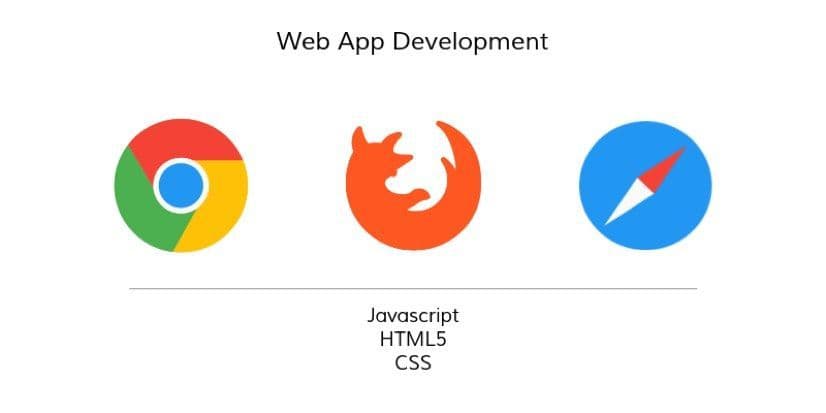
Progressive Web application development
Besides (native) Mobile Applications and Web Applications, there are so-called Progressive web applications, or PWAs. PWAs can be defined as the middle way between web apps and native apps. They function like native apps, but consist of a web app on the inside. A PWA can be seen as an extension of a web application, built with web technologies, but with app-like features. At the back-end, it runs like a web application or website, while additional configurations make sure the overall user experience replicates a mobile app with features such as push notifications, offline capabilities, and a home screen icon. Just like web apps, progressive apps built with programming languages used for developing web apps:
- Javascript
- HTML5
- CSS
The browser as well as its plug-ins run on the back end of the application, and are therefore invisible to its users. This makes progressive apps feel like native apps, but because it’s generally a hidden web app, it’s available for accommodating multiple platforms. When customers access a website on their browser, they can create a shortcut of the PWA to their homescreen, so when they want to revisit that same website, they only need to click the shortcut icon. PWA contributes to an enhanced user experience by delivering native app-like functionalities, fast web load speed, access to push notifications, and offline modes.
A great benefit of progressive apps is the fast development process, together with the fact that it’s not bound to one single platform. If you want to bring your app on the market (for all platforms) as soon as possible, developing the product as a progressive app is the best way to deliver your MVP. This MVP consists of an app with the minimum amount of functionalities to deliver to the market and add value for users. Because building progressive apps is less expensive and time-consuming, it’s a good way to deliver a functional product to your audience, and analyse the overall user experience.
Examples of progressive Apps are:
- Telegram
- UBER
- Pinterest</p>
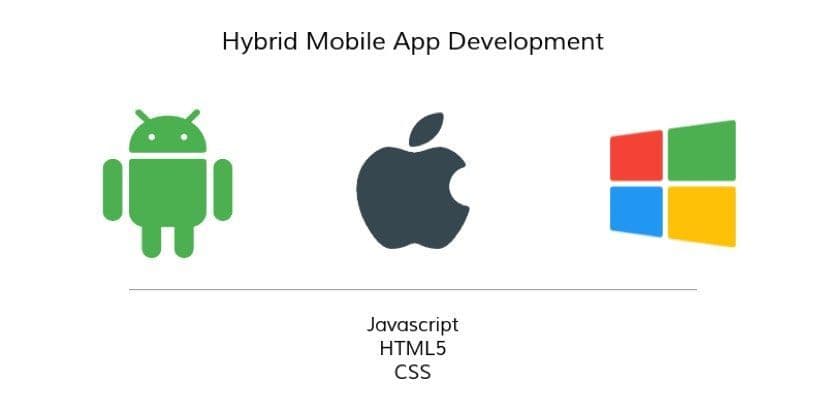
Cross-Platform App Development
Cross-platform application development revolves around the development of one single code, before compiling it to different mobile operating systems. Just as progressive web apps, the developer has to write the code only once, but the difference lies in the overall access to native components and compilers for native performance. Whereas progressive web apps are limited to the use of web-based languages like HTML5, CSS and Javascript, cross-platform development also includes non-web technologies:
At Lizard Global, we have chosen React Native to build our cross platform apps which relies heavily on Javascript. React Native, among other benefits, allows developers to write native code at any instance where a react native module is not available, or when the app needs to write some high performance code. In short, react-native allows developers to write a single code base for multiple platforms, while allowing access to full native capabilities, if and when needed.
We work with cross-platform development for a reason. Because of the flexibility, better performance, and other benefits cross-platform app development offers we can work more efficiently and offer our clients and end-users a significantly better quality and experience. Nowadays, the level of performance of cross-platform applications lays very close Native app quality.
Examples of cross-platform apps made with React Native are:
- Facebook Ads
- Walmart
- SoundCloud Pulse</p>
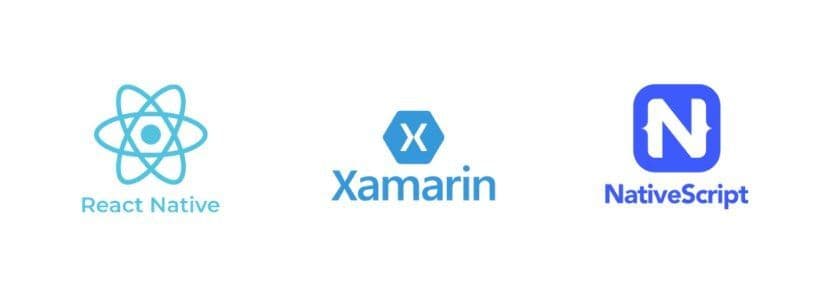
Understanding your needs
If you’re new to the world of app development, it might be challenging at first to figure out how you want to have your app developed. Building a high-quality native app from scratch will probably deliver the best results performance-wise, but it’ll cost you extra time and effort, and mostly lots of money. Especially if you’re not sure if your app idea will succeed, it might be risky to immediately have your idea developed into a native app. Perhaps it’s a better idea to test out the waters of the market, and search for a progressive app developer.
Before you decide on how you want to develop your app, it’s good to ask yourself these questions:
- What problem am I trying to solve?
- Who is my target audience/target market?
- How many features do I want?
- What is my budget?
- Do I need to extensively test different features amongst my end-users?
- On what platform(s) will my users most likely want to use this app?
- How can my users interact with my app most effectively?</p>
Once you have a clear idea of where you want to go with your app, it’s time to dive into the options of developers. If you still need to go through the process of idea conceptualization and market research, it’s probably a good idea to search for a full stack digital partner. They provide a complete collection of services, from digital conceptualization and market research to design, technical development, go-to-market strategies, and long-term maintenance, which is often more sustainable and cost-efficient than choosing for individual parties.
Mobile App Development at Lizard Global
Lizard Global is a full stack digital agency, experienced in all facets of app development. Our developers are specialized in native app development, web app development, progressive web app development, and cross-platform app development with React Native.
If you’re not entirely sure yet what type of app development fits your ideas, we can help you with digital conceptualization, and give you advice regarding the most efficient development process for your app. Interested in what we can do for you regarding the development of your app? Don’t hesitate and get in contact with us for an in-depth consultation of the possibilities.

There’s much more to app development than some lines of code. This blog gives you an insight into three types of app development: Native, Web, Progressive, and Cross-platform.
While the world around us is changing rapidly, our mobile devices are changing just as quickly. Technology - especially mobile applications are continuously being improved - taking advantage of new advances and improvements and providing a better overall user experience. In order to keep up, it’s critical to stay up-to-date with the latest innovations in software development. This blog provides you with an insight into the basics of application development.
Understanding development
Application development is a very broad concept, and difficult to grasp for people who aren’t familiar with technical terms and concepts. In order to give you a clear insight into what application development entails, we start with an overview of four different types of application development: Native, Web, Progressive, and Cross-Platform.
Native mobile application development
Native application development is bound to specific operating systems/platforms, and are only available in mobile app stores. This means that native apps aren’t made to function on browsers. These fully mobile-bound applications mainly focus on three operating systems: Apple iOS, Android, and to a much lesser extent Windows (Phone). Platforms like Apple and Google provide app developers with their own Integrated Development Environments (IDEs); Xcode and Android Studio. These IDEs come with a user friendly interface to provide an overall better programming experience for developers. Apple’s iOS, Android, and Windows platforms possess their own designated programming languages:
- iOS/Apple: Objective-C, Swift
- Android: Java, Kotlin
- Windows: C#
These platform-specific programming languages are developed to provide the best possible user experience for that specific operating system. iOS apps made with Objective-C or Swift all own a consistent user experience and functionality of key features, fitting the iOS platform. Think of, for example, social media sharing: The way iOS handles the sharing of a photo on various platforms works the same amongst different native iOS apps that use the same libraries. Native app development provides overall better performance, as there is a direct interaction with native APIs. This is very useful for apps that rely on heavy-performance, like games with high-quality graphics. Next to that, native developed apps have immediate access to new features introduced by its operating system. Additionally, while not unique, native developed apps also have the ability to interact with built-in features, like your camera or microphone, and other native apps.
The downside of native apps is the fact that they are solely developed for a specific operating system. This means that an application made for iOS can’t be used on an Android device. Apps like Instagram or Snapchat are available on basically all platforms, but they’re all built separately with separate codebases.
Examples of Native Apps are:
- Snapchat
- Pokémon GO
- Google Maps

Web application development
Web applications are defined as apps that are accessed by web browsers via a network like the Internet. A web application is different from a normal website, as web apps are generally more focused on additional functionalities and user interactivity, and almost always require a login to access all or certain functions of the app. Other than mobile apps, web apps don’t have to be downloaded or installed through an app store, but are immediately accessible in browsers like Chrome, Safari, or Firefox by visiting the applicable site. In order to be accessible on multiple devices and screens, web applications are highly dependent on responsive design, which makes sure that the interface stays consistent, no matter what device you use.
A majority of Web Apps are developed by the following languages:
- Javascript, for modifying content based on user interactions or other triggers
- CSS, for adding styling and animation
- HTML5, for the structural presentation of the content
Unlike (Native) mobile apps, web apps aren’t built through Software Development Kits (SDKs). They can be programmed in any type of coding software/environment. The development of a web application can be much simpler and quicker than developing a mobile app, and they do not require regular downloadable updates on your device, as they update themselves, independent from your device. However, contrary to mobile apps, web apps rely on a constant active internet connection, while mobile apps have the ability to function offline.
Examples of Web Apps are:

Progressive Web application development
Besides (native) Mobile Applications and Web Applications, there are so-called Progressive web applications, or PWAs. PWAs can be defined as the middle way between web apps and native apps. They function like native apps, but consist of a web app on the inside. A PWA can be seen as an extension of a web application, built with web technologies, but with app-like features. At the back-end, it runs like a web application or website, while additional configurations make sure the overall user experience replicates a mobile app with features such as push notifications, offline capabilities, and a home screen icon. Just like web apps, progressive apps built with programming languages used for developing web apps:
- Javascript
- HTML5
- CSS
The browser as well as its plug-ins run on the back end of the application, and are therefore invisible to its users. This makes progressive apps feel like native apps, but because it’s generally a hidden web app, it’s available for accommodating multiple platforms. When customers access a website on their browser, they can create a shortcut of the PWA to their homescreen, so when they want to revisit that same website, they only need to click the shortcut icon. PWA contributes to an enhanced user experience by delivering native app-like functionalities, fast web load speed, access to push notifications, and offline modes.
A great benefit of progressive apps is the fast development process, together with the fact that it’s not bound to one single platform. If you want to bring your app on the market (for all platforms) as soon as possible, developing the product as a progressive app is the best way to deliver your MVP. This MVP consists of an app with the minimum amount of functionalities to deliver to the market and add value for users. Because building progressive apps is less expensive and time-consuming, it’s a good way to deliver a functional product to your audience, and analyse the overall user experience.
Examples of progressive Apps are:
- Telegram
- UBER
- Pinterest</p>

Cross-Platform App Development
Cross-platform application development revolves around the development of one single code, before compiling it to different mobile operating systems. Just as progressive web apps, the developer has to write the code only once, but the difference lies in the overall access to native components and compilers for native performance. Whereas progressive web apps are limited to the use of web-based languages like HTML5, CSS and Javascript, cross-platform development also includes non-web technologies:
At Lizard Global, we have chosen React Native to build our cross platform apps which relies heavily on Javascript. React Native, among other benefits, allows developers to write native code at any instance where a react native module is not available, or when the app needs to write some high performance code. In short, react-native allows developers to write a single code base for multiple platforms, while allowing access to full native capabilities, if and when needed.
We work with cross-platform development for a reason. Because of the flexibility, better performance, and other benefits cross-platform app development offers we can work more efficiently and offer our clients and end-users a significantly better quality and experience. Nowadays, the level of performance of cross-platform applications lays very close Native app quality.
Examples of cross-platform apps made with React Native are:
- Facebook Ads
- Walmart
- SoundCloud Pulse</p>

Understanding your needs
If you’re new to the world of app development, it might be challenging at first to figure out how you want to have your app developed. Building a high-quality native app from scratch will probably deliver the best results performance-wise, but it’ll cost you extra time and effort, and mostly lots of money. Especially if you’re not sure if your app idea will succeed, it might be risky to immediately have your idea developed into a native app. Perhaps it’s a better idea to test out the waters of the market, and search for a progressive app developer.
Before you decide on how you want to develop your app, it’s good to ask yourself these questions:
- What problem am I trying to solve?
- Who is my target audience/target market?
- How many features do I want?
- What is my budget?
- Do I need to extensively test different features amongst my end-users?
- On what platform(s) will my users most likely want to use this app?
- How can my users interact with my app most effectively?</p>
Once you have a clear idea of where you want to go with your app, it’s time to dive into the options of developers. If you still need to go through the process of idea conceptualization and market research, it’s probably a good idea to search for a full stack digital partner. They provide a complete collection of services, from digital conceptualization and market research to design, technical development, go-to-market strategies, and long-term maintenance, which is often more sustainable and cost-efficient than choosing for individual parties.
Mobile App Development at Lizard Global
Lizard Global is a full stack digital agency, experienced in all facets of app development. Our developers are specialized in native app development, web app development, progressive web app development, and cross-platform app development with React Native.
If you’re not entirely sure yet what type of app development fits your ideas, we can help you with digital conceptualization, and give you advice regarding the most efficient development process for your app. Interested in what we can do for you regarding the development of your app? Don’t hesitate and get in contact with us for an in-depth consultation of the possibilities.

